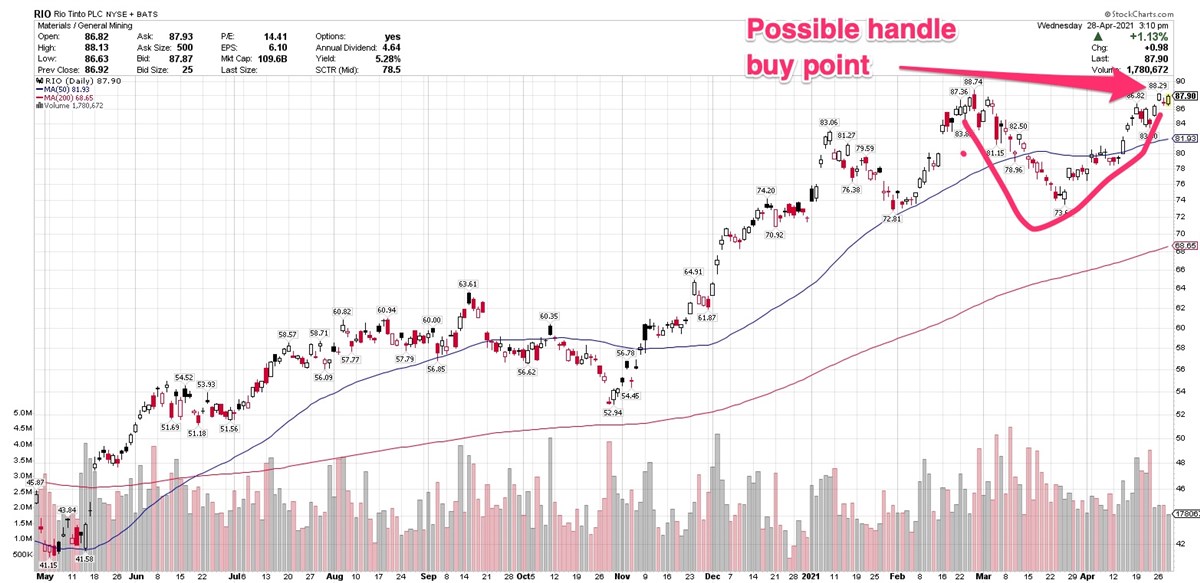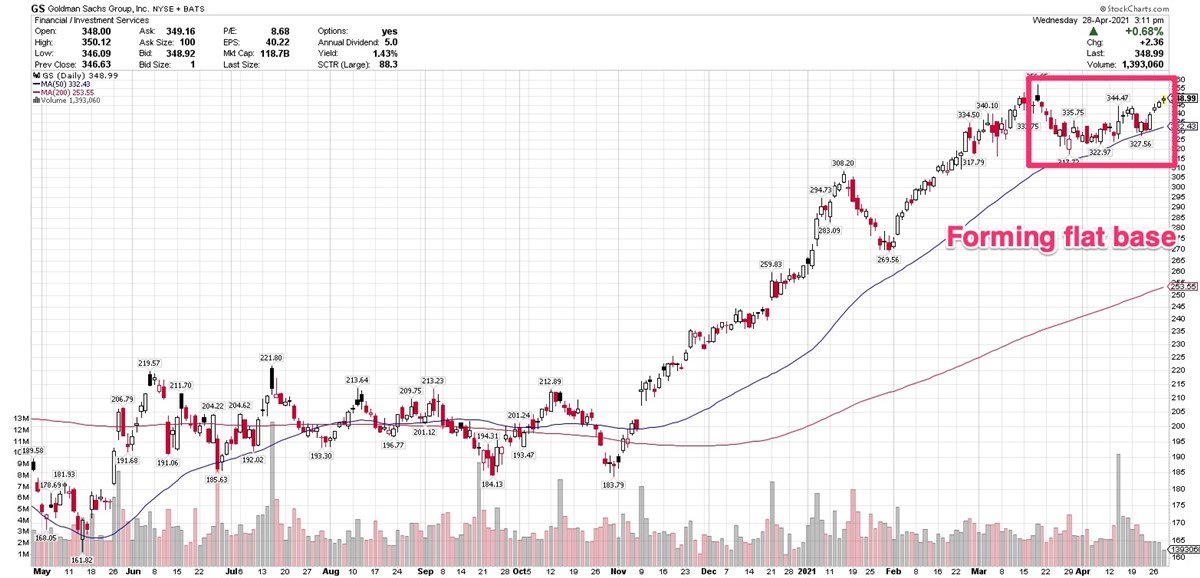April
29, 2021
4 min read
This story originally appeared on MarketBeat
Large-cap stocks Rio Tinto (NYSE: RIO), Goldman Sachs (NYSE: GS) and PayPal (NASDAQ: PYPL) are all forming potentially constructive price consolidations, and may be nearing buy points.
The old advice to “buy low and sell high” applies to stocks that are consolidating.
But that doesn’t mean you should just look for any stock that’s in a slump. The stocks with the best performance after climbing out of a consolidation tend to be those with some track record of sales and earnings growth, as well as healthy return on equity and cash flow.
You also want to see a prior run-up, to ensure institutional support for the stock. Just because the big investors like mutual funds, hedge funds, university endowments and others sell assets doesn’t mean they’ve lost confidence; it often reflects some profit-taking following a rally.
Many large-cap stocks corrected between February and mid-March. This marketwide pullback was reflected in the S&P 500’s 5.7% correction between February 16 and March 4.
U.K.-based mining company Rio Tinto began shaping a base on February 25, shortly after the broader market started correcting. It’s currently etching a cup shape with a potential buy point above $88.73. It may form a handle; if that happens at this juncture, the new buy point would be $88.29.
A proper handle takes a minimum of five days to form. It’s possible the stock may also rally sooner to approach the previous high of $88.29.
As a British company, Rio Tinto is allowed to report earnings semi-annually, rather than quarterly. The next report is due on July 28, so there’s no immediate risk of getting shaken out by a negative earnings surprise.
Rio Tinto stands to benefit from higher copper prices as global manufacturing ramps up, and Wall Street is eyeing an increase in construction demand if President Biden’s $2.3 trillion passes.
Analysts expect Rio Tinto to report earnings per share of $12.10 this year, a 57% year-over-year gain. 
Investment bank Goldman Sachs is also etching a flat base below its March 18 high of $356.85. Goldman Sachs comprises 2.95% of the S&P 500 financial sector, and is the sector’s seventh biggest company, by market cap.
The current buy point is $356.85, but that could change if the stock falls further and disrupts the current flat formation.
It’s been one of the best performing large-cap techs lately, with a one-year return of 91.58% and a year-to-date return of 31.92 %.
Goldman Sachs said last month it would offer its private wealth clients the opportunity to invest in bitcoin and other digital assets.
After an earnings slowdown in 2019, growth resumed in 2020, with the bank earning $27.29 per share, up almost 30%.
Analysts see Goldman Sachs earning $43.89 per share this year, which would mark a 61% increase.
Here’s another benefit to shareholders, even if the stock continues correcting: Goldman increased its dividend in each of the past six years, with the current annual dividend being $5 per share. 
PayPal is another large-cap stock that’s been consolidating and may be approaching a buy point.
The stock’s cup-with-handle base is almost textbook. It rallied to a high of $309.14 on February 16 before pulling back. The top of the handle is $277.86, and the handle has corrected 6.7%. Currently, you’re looking at $277.86 as the next buy point. Ideally, you’d like to see it pass that point in above-average trading volume.
PayPal was a beneficiary of the tidal wave of online buying that gained momentum over the past year.
In a recent interview, CEO Dan Schulman said another factor in the fast pandemic-era growth was contactless purchasing in stores, with many retailers and restaurants turning to PayPal’s point-of-sale systems.
Earnings grew at double-digit rates in seven of the past eight quarters. The sole exception being flat year-over-year earnings in the first quarter of 2020, which was impacted by the initial round of Covid-19 lockdowns.
Revenue growth rates have also been in the double digits.
The company reports its first-quarter on May 5, with analysts expecting earnings of $1.01 per share on revenue of $5.90 billion. Both would be year-over-year increases.
Featured Article: 52- Week Highs




